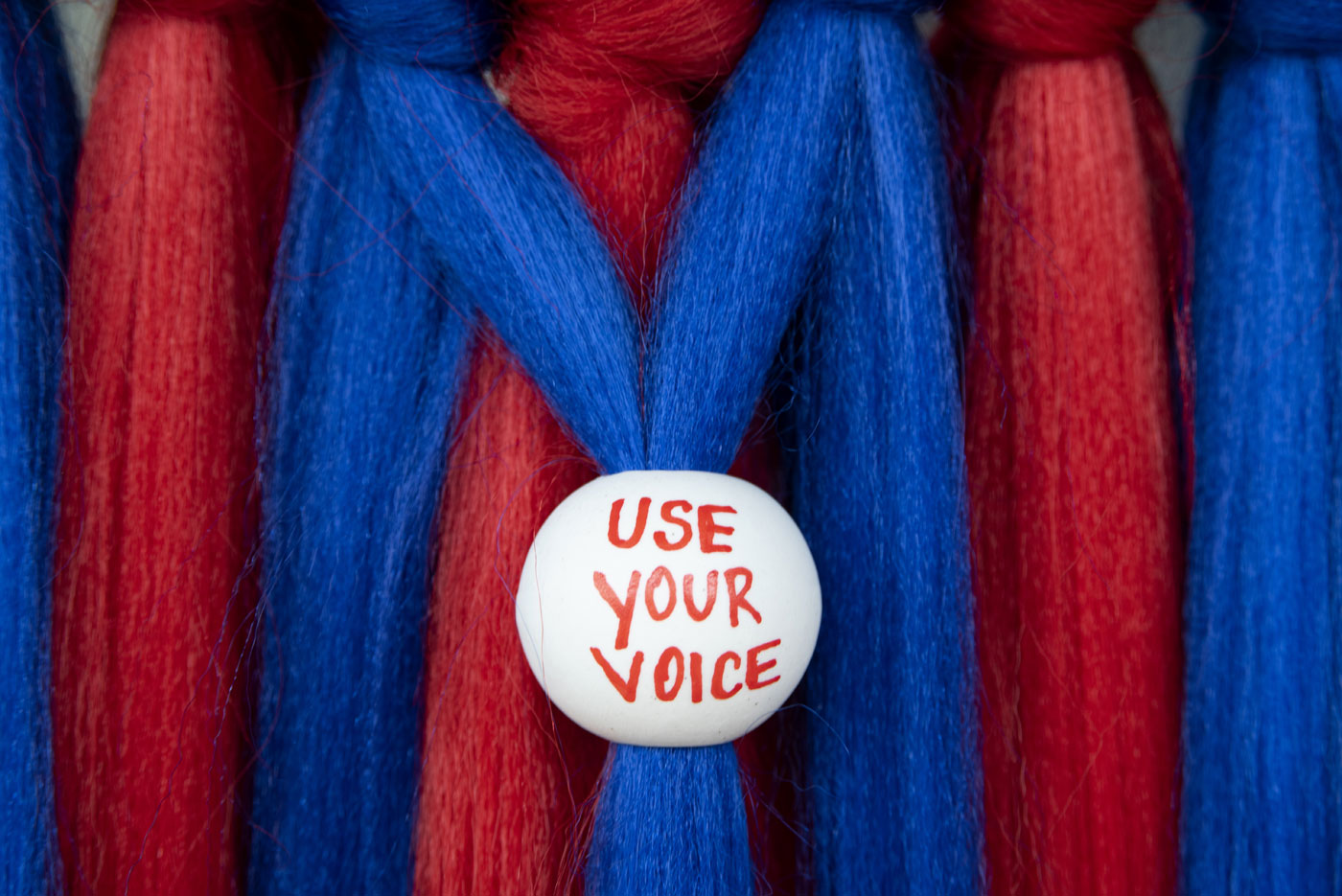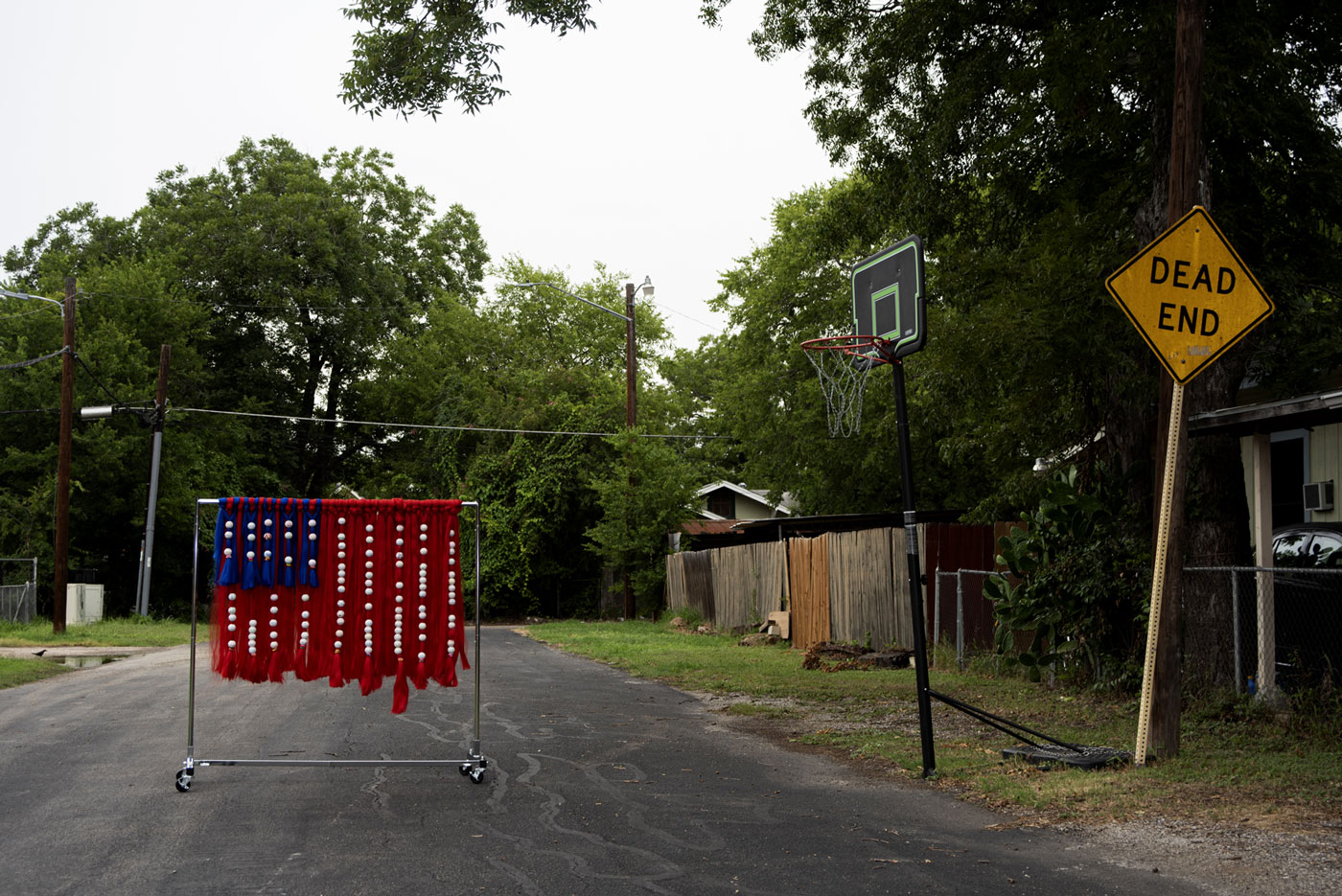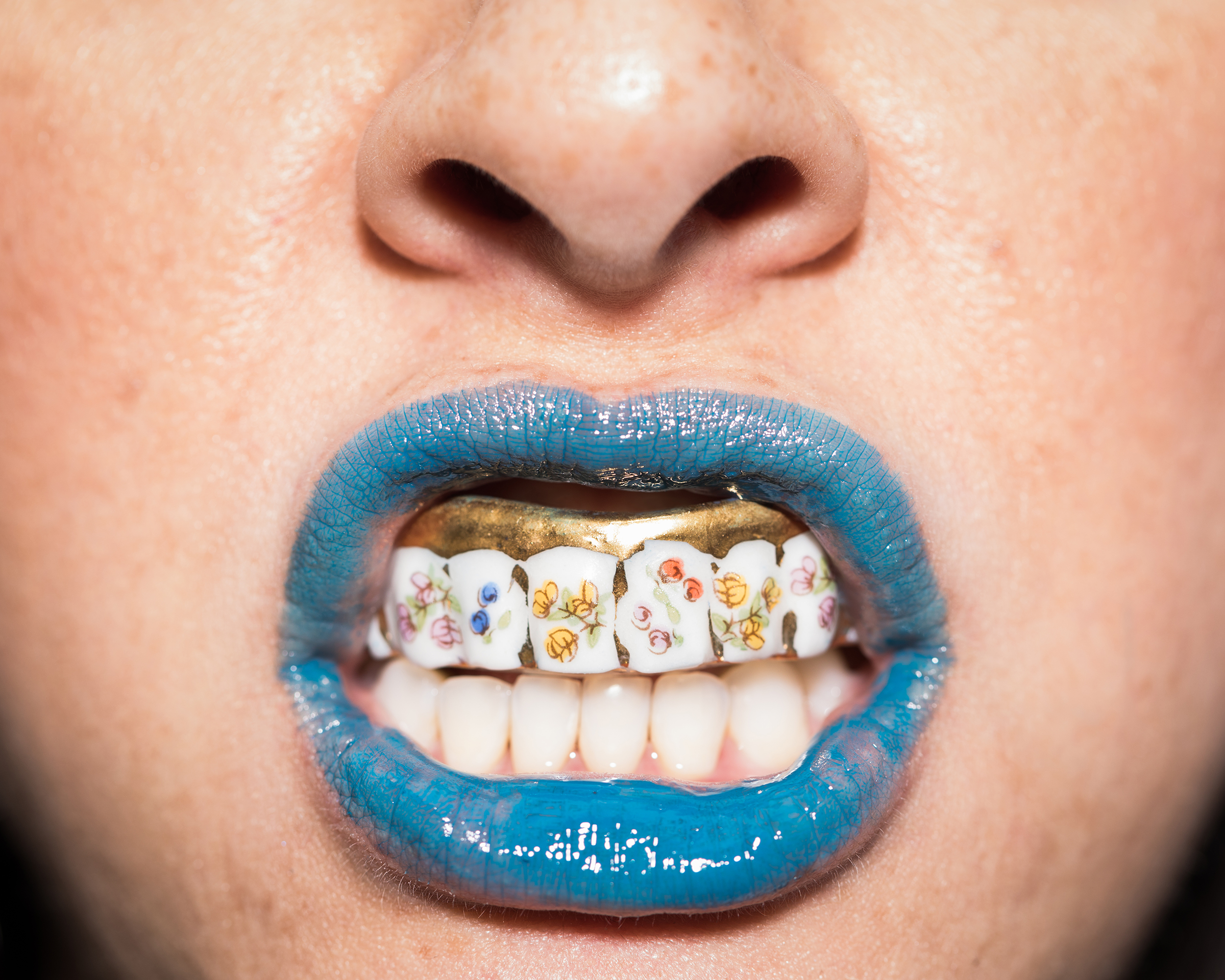Eat Bitterness, 2023

eat (verb)
: to take in through the mouth as food: ingest, chew, and swallow in turn
: to destroy, consume, or waste by or as if by eating
bitterness (noun)
: sharpness of taste; lack of sweetness.
eat bitterness:
a Chinese idiom to describe enduring hardships without complaints, or even to suffer


As the granddaughter of factory workers, my Irish American grandmother was just one of a handful of women who worked the assembly line of a car manufacturing plant, and her Chinese grandmother worked in a sewing factory, located deep within the alleys of Chinatown, for an American retailer. Their hands adapted through the constant path and rumble of the industrial sewing machine and as cars and the assembly-line work modernized with computers and automation. My grandmothers faced poverty, political and social oppression, and personal trauma. Eat bitterness. They were both tough, independent women during a time when women weren’t supposed to be either.

I use porcelain to describe dualities—this material can capture both fragility and resilience. I use adornments, blue and white patterns, reflective surfaces, synthetic and human hair in installations, objects, and video work to explore the global inequalities of labor, notions of girlhood, and forms of protest.





Much of my work focuses on how women specifically embody time: the phases of the moon and the menstrual cycle, the exaggerated weight of waiting and quarantining, the slow growth of hair, the thresholds we cross and the unknown spaces we withstand, and the many “luck” objects we create to hold and use while hoping for a better future or circumstances.






Braiding pain and perfection, these objects amplify female voices, reconstruct our identities, and celebrate our truths. Refuse to eat bitterness. Deep within my DNA and the muscle memory of the assembly line, I also feels my grandmothers' hope.







Jennifer Ling Datchuk: Eat Bitterness, 2023
Bemis Center for Contemporary Arts
May 20, 2023–September 17, 2023
Curated by Rachel Adams, Chief Curator and Director of Programs
Learn more: Bemis Center for Contemporary Arts
Later, Longer, Fewer, 2021

“Later, Longer, Fewer” is the translation of a 1970s Chinese propaganda poster that encourages later marriages, longer intervals between children, and fewer children as a means to liberating women. Women were to take advantage of birth control to curtail the country’s birth rate – a “benefit” that led eventually to China’s one-child policy. Given the culturally instilled value of boys over girls, “fewer” took on a new meaning.


This message suggests that women have the power and access to resources in order to make these decisions in the first place. Given how the United States has so politicized birth control, I began to work with the ironic tension inherent between the expanded opportunities available with modern health care and the systemic inequities that continue to hold women back globally.








Much of the work focuses on how women specifically embody time: the phases of the moon and the menstrual cycle, the exaggerated weight of waiting and quarantining, the slow growth of hair, the thresholds we cross and the unknown spaces we withstand, and the many “luck” objects we create to hold and use while hoping for a better future or circumstances.







The societal, cultural, and political systems women navigate are explored here through porcelain, adornment, blue and white patterns, reflective surfaces, and synthetic and human hair via installation, objects, and video. In juxtaposition, pieces explore how relegation to the domestic, mother-sphere annihilates the innocence of girlhood and locks women into a controlled space of servitude. As an Asian woman, using race as a lens further narrows the circles we are allowed to operate within.



No matter how empowered, no matter what we have attempted to reclaim, women still find themselves moving back and forth among choices dictated by narratives we did not create.


Learn more: Houston Center for Contemporary Craft
Live to Die, 2020
Installations at Black Cube “Fulfillment Center” and “NCECA”
Red doormats that say "welcome" in Chinese and English are found in front of almost every Chinese restaurant and business all over the world. These mats are markers for crossing thresholds, the objects below our feet that welcome or receive us as we work, spend, desire and consume. This red is symbolic of good luck and fortune in Chinese culture but synonymous with anger and passion. The pallet rack with the stacks of mats embossed with the phrase "Live to Die", a morality statement found at the bottom of alphabet samplers from the 1800's. This phrase stitched onto linen by the hands of young girls who probably did not fully understand the darkness and futility of these words.
![]()
![]()
Disrupting the perfect stacks of doormats are golden figurines of a young Asian girl, barefoot, wearing a rice pickers hat, and carrying a heavy load on a shoulder yoke. They become buried under the weight of the mats, hidden and obscured but we know they are there. Her labor and presence invisible to the objects we so easily order and buy but so much a part of this cycle of consumption and fulfillment.
![]()
![]()
I often think of the label “Made in China” and how its associated with objects that are cheaply and poorly made. What makes their labor and bodies any less than that of American labor? We need to acknowledge and confront are the capitalist systems in place that have created an American ruling class that for decades have put profits over people and continually exploit global inequality.
![]()
![]()
![]()
Learn more: blackcube.art


Disrupting the perfect stacks of doormats are golden figurines of a young Asian girl, barefoot, wearing a rice pickers hat, and carrying a heavy load on a shoulder yoke. They become buried under the weight of the mats, hidden and obscured but we know they are there. Her labor and presence invisible to the objects we so easily order and buy but so much a part of this cycle of consumption and fulfillment.


I often think of the label “Made in China” and how its associated with objects that are cheaply and poorly made. What makes their labor and bodies any less than that of American labor? We need to acknowledge and confront are the capitalist systems in place that have created an American ruling class that for decades have put profits over people and continually exploit global inequality.



Learn more: blackcube.art
100 Years, 100 Women, 2020
![]()
100 Years, 100 Women, 2020Park Avenue Armory, New York, NY
Curated by Dr. Deborah Willis
This year we celebrate the 100th anniversary of the ratification of the 19th amendment that guaranteed all American women the right to vote. In 1920, this did not give all women the right to vote, as Asian American women could not vote until 1952, Native American women could not vote in all 50 states till 1957, and a majority of Black women could not vote till 1965. We vote to create change and see our communities and values reflected in our elected officials. Americans are being confronted with their icons, their fetishes, their appropriations and the erasure of HERstory. Voter suppression through barriers of registration, id requirements, lack of early voting, laws, intimidation and systemic racism are keeping people from exercising their right to vote. These hits keep coming but this work to guarantee the right to vote is multigenerational, multicultural, and intersectional and absolutely necessary to dismantle power structures and build an equitable and inclusive United States.
![]()
![]()
![]()
Learn more: www.100years100women.net



Learn more: www.100years100women.net
thick, 2019
thick, March 21, 2019 - May 20, 2019Artpace Spring 2019 International Artist-in-Residence Program
Curated by Dr. Deborah Willis

Timeless in the human experience is the desire to change our appearance and it is not limited to our teeth. Grills have been around since seventh century BC with Etruscans living in Italy. Etruscan women were the first to wear gold teeth and what can be categorized as present day grills. They were beyond dentistry adornment and served as physical markers of class, privilege, and power. They have been around since the beginning of human history and have crisscrossed the world and are multicultural.

My Chinese grandmother, Paw Paw, had bad teeth, barely any really. She lived through the brutal struggles of communism in China and came to the US as a refugee in the 70’s. Her teeth were bad because she couldn’t afford to fix them. After working years in a sewing sweat shop in the bowels of Chinatown in NYC, she got a gold rimmed tooth, and eventually gold teeth. All her friends did and they proudly showed off their shiny, new, gold capped teeth, a symbol of their hard work, of moving up in the world, and the American dream.


I am interested in disentangling the history of objects, examining material culture, and how we consume, adorn, and own present day objects.
This VICE news article goes into a little more depth about the grill and how it intersects multiple cultures and communities. We place the grills within Black culture but they are multicultural. I do think the word grill is appropriated (language/slang/pop culture hashtags are appropriated from Black culture) and the object itself exists in hip hop and Black culture without knowledge of its origin story. I don't want to proclaim the ownership of the grill but to ask questions about it and these can be difficult conversations. I also come to this as a first generation Chinese American who grew up in Bensonhurst, Brooklyn and exist within a third culture (neither fully one or the other).


My grill is a porcelain decorated facade for teeth. It's rimmed in gold luster and adorned with ceramic decals and decorated like the rims of fine china service ware. The blue lipstick is a nod to blue and white pattern decorations and the global migration of this Asian decorative style. I thought about how as an Asian woman I have to grit my teeth, play nice, and never show face. I grit my teeth and flare my lips to express my frustration that we have not overcome more as women. I wanted to show that porcelain, like women, is often perceived as fragile and delicate but it is strong and resilient.
"Hit Me With Your Best Shot" is made from collectible, editioned Lenox, USA china commemorating the White House of the Confederacy. These were made in the USA in 1971 and designed by the Trustees of the White House of the Confederacy Committee and the construction of the new Museum of the Confederacy. There are about 10-12 different designs and I purchased the plates from eBay and they all come from sellers in Richmond, Virginia. They come in special boxes with pamphlets telling a brief history of the scene or general depicted with no mention of the Civil War, the enslaved people, or Black oppression. One complete set of these plates are on display at the Smithsonian.
When I was creating this piece last year, I listened to debates and watched a Confederate statue be removed from downtown San Antonio and a local school go through the process of changing their name from Robert E. Lee high school to Legacy of Educational Excellence (LEE). San Antonio is a minority majority city but the power structures are still white.


The images of these plates are known people, places, and things that played significant roles in the Confederacy and the oppression of Black people. The oppression of people of color continued after the Civil War and the histories, stories, and lynching of African Americans, Latinos, Asians, Native Americans, and Jews, in the American West and nationwide. This oppression and ideology continues to align with white supremacy, KKK, khaki brigade, voter suppression, anti-Semitism, police brutality and so much more to list.
I worked with a water jet cutting business in San Antonio to cut out the main image of the plate - essentially erase them and remove them from the collectable, and dismantle their power and value in the object. I then transformed the cut images by painting MAGA hats on them to show how history of oppression is repeating itself and we have a President that is igniting it. The images become charms on a bracelet, a collection of monuments taken down. They are attached to a Cubin linked iced chain bracelet that I purchased in Chinatown, NYC on hip hop jewelry street. Each store has names of every hip hop/pop artist who has visited their stores. They are Chinese owned and operated and complete fakes made to look very real. Each piece has hand set stones and after the purchase the seller stamps "14K" on the back to give the appearance of genuine gold and diamond jewelry.
Like the grill and this cut plate jewelry, I am interested in the Asian labor in creating objects of cultural ownership and significance that exist in complicated conversations about pop culture.


